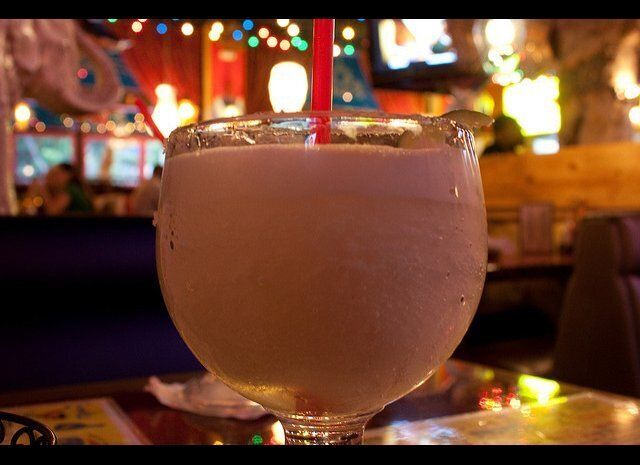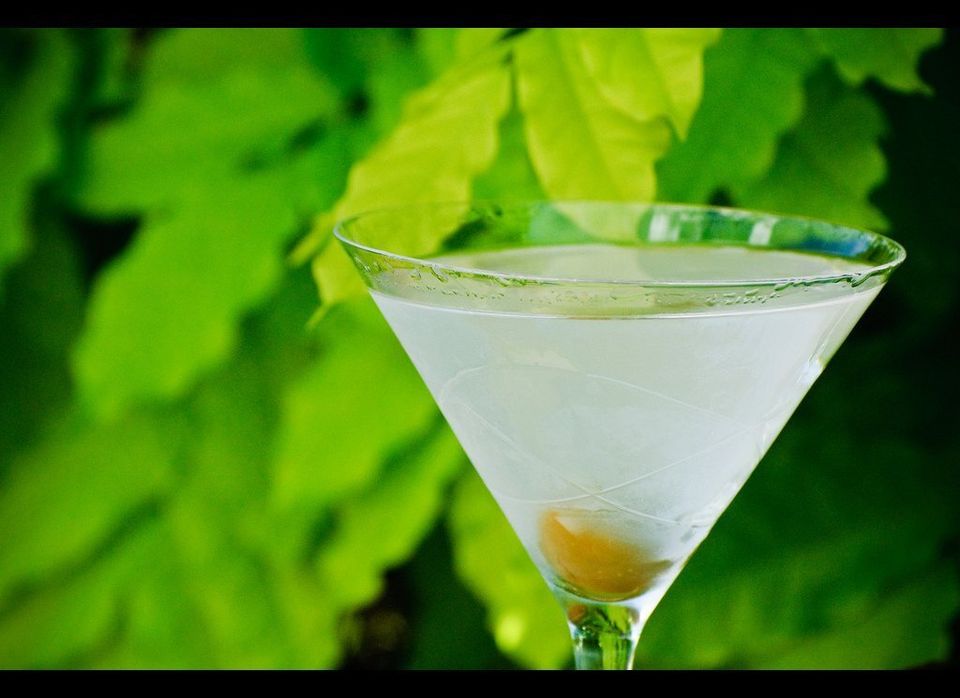The other night a gentleman came in, sat down and ordered a Sex On The Beach. I had to stop for a moment to recall the recipe, because I hadn't made it in a very long time. I faintly heard an old Flock of Seagulls song as I reached for the peach schnapps and it made me think of all the drinks that used to be very popular, and now have all but disappeared from the modern repertoire. Drinks like clothing or music rise and fall out of fashion, but I think underneath much of what has slid to the bottom of the list of favorites is a smoking gun. That smoking gun is what planted the seeds of the new age of mixology.
If there was a Dark Ages in cocktails, it was perhaps the 1980s and the 1990s. There was an introduction into the liquor world of things like Peach Schnapps, Butternut Schnapps, Midori, Goldschlagger, not to mention all the "flavored" Vodkas and Rums. It created a whole new list of drinks that spoke to what people wanted then, and it clearly shows us why present-day mixology developed. Like the culinary world, the world of mixology has come a very long way in a relatively short period of time. To understand how good we have it now, we have to examine the drinks that have lost their appeal and then understand why it happened.
As I stated in a previous post, the boomer generation did not grow up with a deep appreciation for classic cocktails. During the 1960s and '70s, the mind-altering choices were of the drug kind, and drinking, although popular, was relegated to beer and very cheap wine, or maybe the odd Black Russian, or Margarita, but there was scant attention to cocktails and how they were being made. The WWII generation and those before it were paying attention, but they had their own limitations. Most of them had grown up after prohibition, and therefore had no recollection of the amazing eras that their parents and grandparents imbibed in. After the war, the era of Sour Mixes, or Lemon X began. As Americans were filling their cupboards with processed foods and powdered juices like Tang, bars were changing to accommodate Americans desire for "quick and easy" and rather than using fresh juices for cocktails, most drinking establishments began using sour mixes which were made even more convenient by being added to soda guns.
Things got progressively worse. Untrained bartenders who were making sours, or collins, or margaritas, often built them right into the glass and didn't even bother to shake them, so if you ordered say a whiskey sour, they would fill a glass with ice, and pour in the whiskey and sour mix, and hand it to you. It's safe to say that those drinks fell further out of favor.
Then, the blender era came in. By the early to mid '80s, every bar offered the obligatory frozen drink of which the strawberry daiquiri was king. Pina Coladas, Margaritas, and Daquiris of all sorts were served out of a blender. To capitalize on the trend, the Margarita machine became hugely popular and of course highly profitable. You could put the cheapest tequila, and the cheapest sour mix into the machine and people would line up around the block to partake. Drinks were also becoming sweeter by the year it seemed. These were dark days in cocktail history to be sure. All respect for cocktails were relegated to those old standby joints that still did it the old way. But things were about to change.
Many theories have been offered as to what created that change. Many of them are correct: The rise in the quality of food and menu choices, the quest for more natural ingredients, etc., but I think that when the boomers reached their 30s and were having kids and basically becoming adults, they wanted something more sophisticated when they chose to go out. The days of standing and drinking beer or cheap wine didn't cut it anymore. Wine was becoming more popular by the year, and people's knowledge of food was increasing as were their pocketbooks. They began to experiment with cocktails and began to listen to music of their parent's generation like Sinatra, Dean Martin, and Edith Piaf, to name a few. Jazz made a comeback of sorts although a lot of it was "smooth jazz" which was to jazz what the blender was to classic cocktails.
In the '90s, I worked at an establishment in San Francisco called Bix, named after the famous saxophonist Bix Beiderbecke who was a relative of the owner. It had a speakeasy vibe, i.e., down an alleyway; 1930s décor; three-piece jazz band with a singer, and a big bowl right in the middle of the bar which was filled with crushed ice and chilled martini glasses. It held a huge variety of liquor on its shelves, had a premium well, and had well-trained bartenders who knew what was in those bottles, and knew how to make classic cocktails. It boasted fresh juices as well as bottle service instead of soda guns. It opened in the late '80s and captured the desire people had for sophistication. It was packed nightly, and it highlighted clearly what the public wanted, and it gave it to them. Like many things, the trend started in the west and came east.
We now have "speakeasy"-type establishments all over the country. They have mostly been opened and operated by Gen Xers and Gen Yers who continued the trend, and with the help of all the available information on the internet and all the social applications that helped transmit information faster, they have moved the ball still further ahead. These bars are temples for making and celebrating the art of The American Cocktail. You can have expertly made cocktails from some amazing young men and women who have forever changed the way things were, and have restored our American cocktail culture to its rightful place. It doesn't mean there aren't still places out there that are making bad cocktails, but if you look hard enough, you can find a great libation now. At some point soon, I will blog about some of these places that deserve to be recognized.
Listed below are cocktails that for the sake of this subject, are here to show what has fallen out of fashion. Some have slipped for the obvious reasons, but some of them need to make a comeback. I'll let you decide which of those do. Below that, I've listed some cocktails that are coming back or never completely left us.
Meanwhile, I'll see you when I see you.
Cocktails or products or juices that have fallen out of favor:
Anything Frozen
The Strawberry Daquiri
Pina Colada
Midori
Melonball
Pearl Harbor
Peach Schnapps
Woo Woo
Fuzzy Navel
Hairy Navel
Sex On The Beach
Tequila Sunrise
Cranberry Juice
Cosmopolitan
Harvey Wallbanger
Sloe Gin Fizz
Whiskey Sour
Slow Comfortable Screw
Between The Sheets
Planter's Punch
Smith & Kearn's
Stinger
Rusty Nail
Grasshopper
Pink Squirrel
Golden Cadillac
B-52
Black Russian
Velvet Hammer
Brandy Alexander
Singapore Sling
French Martini
Godmother
Godfather
Drinks That Have Come Back Or Have Staying Power:
Martini
Manhattan
Sidecar
Old-Fashioned
The Sazerac
Bloody Mary
Margarita
Cobblers
Sours
Negroni
Mojito
Southside
Bee's Knees
Kir
Kir Royale
Champagne Cocktail
French 75

